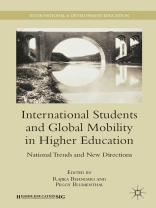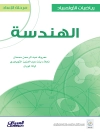This book examines current trends in global student mobility patterns in several key host and destination countries, including the United States, China, India, South Africa, Mexico, Australia, and Germany, among others, and will explore the national and global-level factors that contribute to these trends.
表中的内容
Global Student Mobility and the 21st Century Silk Road: National Trends and New Directions; R.Bhandari & P.Blumenthal Mobility Strategies and Trends: the Case of China; Y.Xinyu India’s Growing Influence in International Student Mobility; P.Agarwal International Student Mobility: a European Perspective from Germany and the UK; C.Bode & M.Davidson Understanding International Mobility in a U.S. Context; A.E.Goodman International Education in Australia: From Aid to Trade to Internationalization; M.Banks , T.Adams & A.Olsen Student Mobility Trends in Latin America; H.de Wit & I.C.Jaramillo Student Mobility Trends in Africa: A Baseline Analyses of Selected African Countries; R.Kishun Structural Incentives to Attract Foreign Students to Canada’s Post-Secondary Educational System: A Comparative Analysis; J.Mc Hale Can Speak, Will Travel: The Influence of Language on Global Student Mobility; V.Lasanowski Regional Education Hubs: Mobility for the Knowledge Economy; J.Knight
关于作者
Global student mobility is one of the fastest growing phenomena in higher education in the twenty-first century. Over three million students are currently mobile, crossing geographic, cultural, digital, and educational borders in the pursuit of an international education – a movement that has significant consequences for higher education institutions and nations worldwide. International Students and Global Mobility in Higher Education: National Trends and New Directions examines current trends in global student mobility in key destination and sending countries, including large hosts like the U.S., U.K., Germany, and Australia and newer players such as China, India, and the educational hubs of the Middle East. Experts from these countries, and others, offer timely analysis for higher education policymakers, practitioners, and researchers, of how national-level investments and developments affect academic migration trends; the current and future capacity of countries to accommodate a growing demand for a higher education; and the implications of mobility for the labor market and economy.












